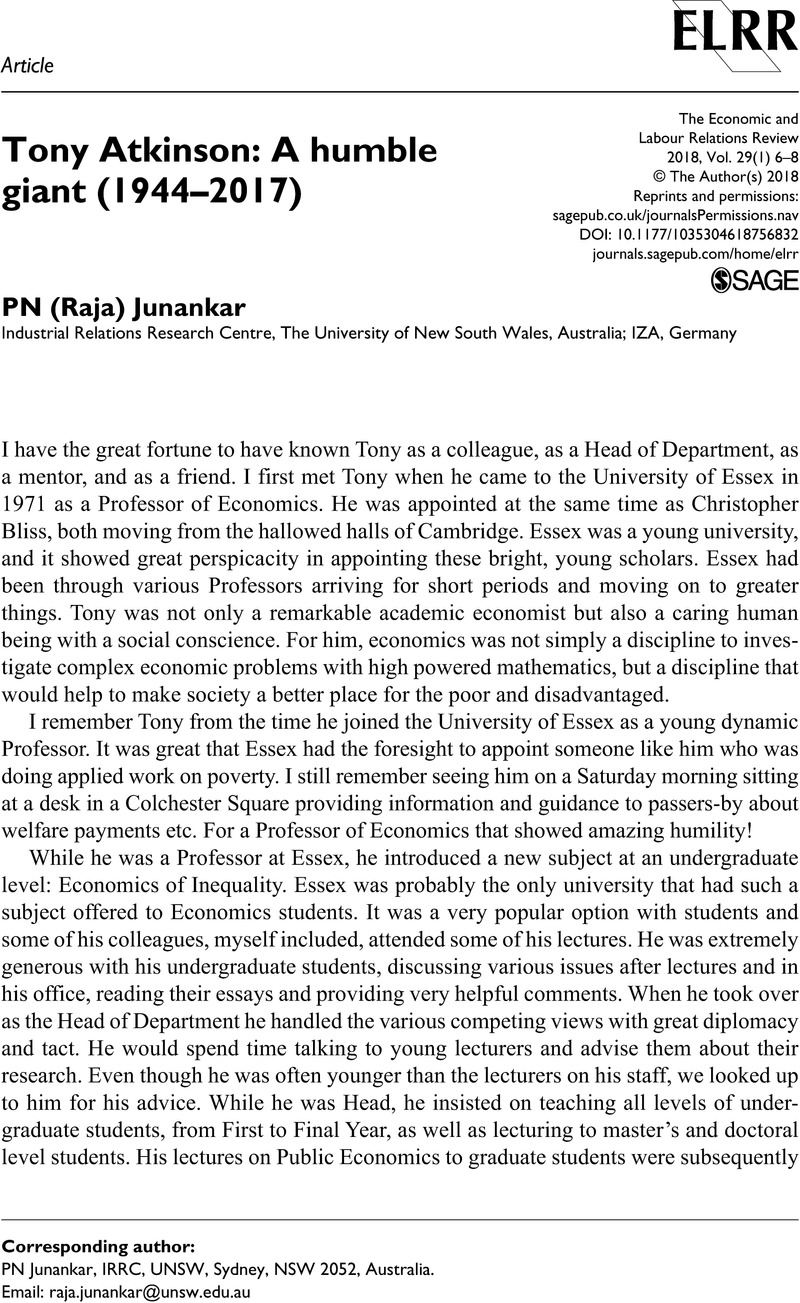No CrossRef data available.
Article contents
Tony Atkinson: A humble giant (1944–2017)
Published online by Cambridge University Press: 01 January 2023
Abstract
An abstract is not available for this content so a preview has been provided. Please use the Get access link above for information on how to access this content.

- Type
- Articles
- Information
- The Economic and Labour Relations Review , Volume 29 , Issue 1: Symposium on inequality in honour of AB Atkinson , March 2018 , pp. 6 - 8
- Copyright
- Copyright © The Author(s) 2018
References
Atkinson, AB (1970) On the measurement of inequality. Journal of Economic Theory 2(3): 244–263.CrossRefGoogle Scholar
Atkinson, AB (2015) Inequality – What Can Be Done? Cambridge, MA: Harvard University Press.CrossRefGoogle Scholar
Piketty, T (2014) Capital in the 21st Century (trans. Goldhammer, A ). Cambridge, MA: Harvard University Press.Google Scholar
World Bank (2017) Monitoring Global Poverty: Report of the Commission on Global Poverty. Washington, DC: World Bank.Google Scholar


